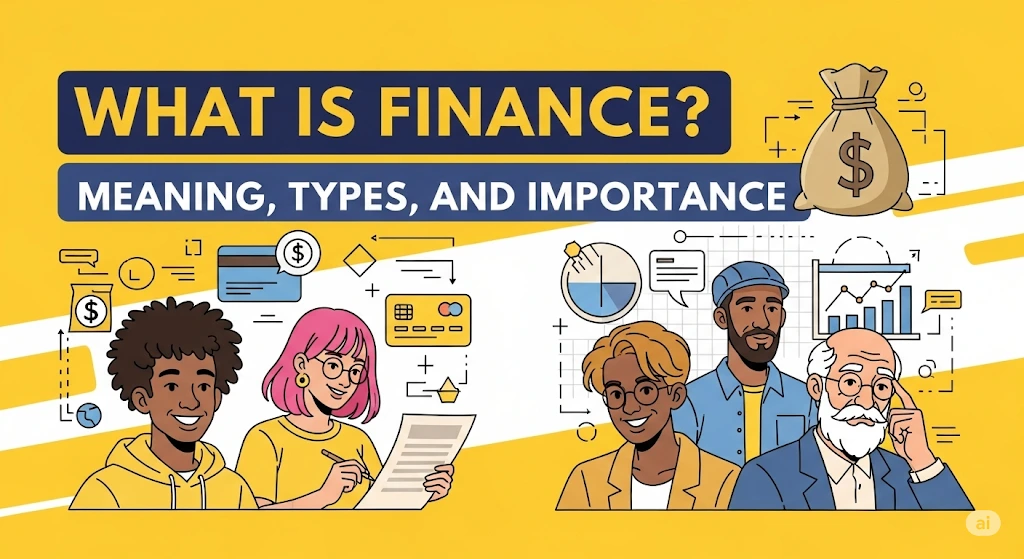Credit cards are useful financial tools that offer convenience and purchasing power. However, they come with various charges, and one of the most common yet confusing terms is “finance charges.” Many users don’t fully understand this term, leading to unexpected costs on their monthly statements.
In this blog, we will explain in simple language what is finance charges in credit cards, how they are calculated, real-life examples, and how to avoid them.
What is Finance Charges in Credit Card?
A finance charge is the interest or fee that a credit card company charges when you don’t pay your full bill by the due date. It is basically the cost of borrowing money on your credit card.
It includes:
- Interest on outstanding balance
- Cash advance fees
- Late payment charges
- Sometimes even balance transfer fees
In simple words:
Finance charge = The cost you pay for using the bank’s money if you don’t repay it on time.
Types of Finance Charges
Here are the common types of finance charges in credit cards:
| Type | Description |
| Interest on purchases | Charged when full payment is not made on purchases. |
| Cash advance fee | Charged when you withdraw cash using your credit card. |
| Balance transfer fee | Fee charged when you transfer balance from one card to another. |
| Late payment charges | Fee if you miss your payment due date. |
| Over-limit charges | Fee for spending more than your credit limit. |
How is Finance Charge Calculated?
Finance charges are usually calculated using Daily Periodic Rate (DPR) or Monthly Percentage Rate (MPR), based on the Annual Percentage Rate (APR).
Formula
Finance Charge = Average Daily Balance × Daily Periodic Rate × Number of Days in Billing Cycle
Where:
- Average Daily Balance is the average amount you owe daily.
- Daily Periodic Rate (DPR) = APR ÷ 365
🔢 Example
Let’s assume:
- APR = 36%
- Outstanding Balance = ₹10,000
- Days in billing cycle = 30
Step 1: Calculate DPR
36% ÷ 365 = 0.0986% or 0.000986
Step 2: Apply the formula
₹10,000 × 0.000986 × 30 = ₹295.80
So, the finance charge for this month will be approximately ₹296.
Real-Life Scenario
Example:
Raj spends ₹15,000 on his credit card and pays only ₹5,000 before the due date. The remaining ₹10,000 starts attracting interest (finance charge).
- APR = 36%
- DPR = 0.0986%
- Outstanding days = 30
Finance Charge = ₹10,000 × 0.000986 × 30 = ₹295.80
So, Raj will see a ₹295.80 charge added to his next bill.
Finance Charges for Cash Withdrawals
Cash advances (ATM withdrawal using a credit card) attract higher interest rates and no interest-free period. For example:
- Withdrawal amount = ₹5,000
- APR = 42%
- Days = 15
DPR = 42% ÷ 365 = 0.00115
Finance Charge = ₹5,000 × 0.00115 × 15 = ₹86.25
Note: There might also be a flat cash advance fee of 2.5% or minimum ₹300.
How to Find Finance Charges on Your Credit Card Statement?
Your monthly credit card bill will show the following:
| Section | What it Shows |
| Statement Balance | Total amount due |
| Minimum Amount Due | Smallest amount you must pay |
| Payment Due Date | Deadline to avoid finance charge |
| Interest Charges | Finance charge for unpaid amount |
| Transactions | Any cash advance or fees |
Look for terms like “Interest,” “Finance Charges,” or “Cash Advance Fee.”
How to Avoid Finance Charges?
Here are some smart ways to avoid these charges:
- ✅ Pay Full Amount – Always pay your total due before the due date.
- 🔄 Set Auto-Pay – Avoid late payments using auto-debit.
- 📅 Track Billing Cycle – Know when interest starts applying.
- 💳 Don’t Use Cash Advances – These incur immediate interest.
- 💰 Avoid Minimum Payments – Paying just the minimum keeps the finance charge alive.
Tips from Top Sources
Here’s what top websites advise:
| Source | Advice |
| Investopedia | Understand your APR and read the terms of your credit card carefully. |
| American Express | Avoid cash advances and always try to pay your full statement balance. |
| DBS Bank | Be aware of your credit card’s specific rates and interest-free period. |
Summary Table
| Finance Term | Explanation | Can You Avoid It? |
| Interest on Purchase | Charged on unpaid purchases | ✅ Yes |
| Cash Advance Fee | Fee on ATM withdrawal via card | ✅ Yes (avoid cash use) |
| Late Payment Fee | Charged if payment is missed | ✅ Yes (pay on time) |
| Balance Transfer Fee | Fee to move balance from another card | 🚫 Usually No |
| Over-limit Charges | Fee if spending exceeds credit limit | ✅ Yes |
Conclusion
What is finance charges in credit card? Finance charges in credit cards are a common reason people fall into debt without even realizing it. It is the cost you pay when you don’t pay your full credit card bill on time. These charges may seem small but can add up over time and become a financial burden.
To avoid finance charges:
- Pay your full balance every month
- Avoid cash withdrawals
- Keep track of your billing cycle
- Understand your card’s interest rates
Stay informed, manage your credit card wisely, and enjoy the benefits without falling into debt traps!


